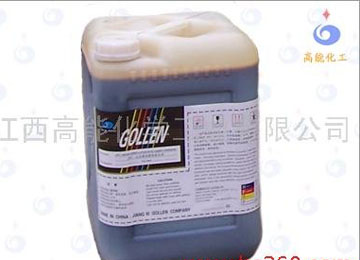JFY-1 High Efficiency Heavy Oil Combustion Catalyst
With the rapid development of industrial production, the source and supply of heavy oil are becoming increasingly tense. With the continuous improvement of petroleum refining level, the viscosity of heavy oil is getting bigger and thicker, which brings great difficulties to the combustion of heavy oil. The incomplete combustion of heavy oil will bring the following prominent problems:
Firstly, the combustion is not smooth, the adjustment of furnace fire is difficult, the temperature of furnace is not easy to regulate, the heating rhythm is not easy to control, and the intensity of initiating work is relatively high.
Secondly, the serious coking of combustion furnace, the more times of coke removal overhaul, the more time it takes, which affects the normal production, and the lower the effective operation rate.
Thirdly, the burnout rate of heavy oil decreased significantly and the energy consumption increased.
Fourth, the increase of smoke and dust and the decrease of emission quality aggravate the pollution of production environment and atmospheric environment.
Therefore, for a long time, people have been eagerly seeking a simple, economical, reliable and effective method to solve these problems at one stroke.
JFY-1 high-efficiency heavy oil combustion catalyst emerged as the times require. It is a professional catalyst for heavy oil combustion and coke removal. It plays an important role in enhancing firepower, increasing furnace temperature, accelerating production rhythm, saving energy and reducing consumption, and improving the environment. It will certainly become the most ideal choice for people to choose many ways.
I. Promoting combustion, removing coke and reducing fuel consumption
1. Improving one-time atomization - now heavy oil is close to residue, more and more viscous and less fluidity, which brings great difficulties to good atomization of heavy oil. The catalyst can effectively reduce the surface tension of heavy oil and the viscosity of heavy oil, increase the fluidity (which can be directly seen on the heavy oil pressure gauge) and greatly improve the primary atomization conditions of heavy oil.
2. Increase secondary atomization - In fact, primary atomization is often not enough to make heavy oil burn completely and fully. This catalyst can re-atomize heavy oil, expand the specific surface area of heavy oil hundreds of times, minimize heavy oil particles, greatly increase the contact surface between fuel and air, completely compensate for the deficiency of primary atomization, and make combustion faster and more complete.
3. Accelerate the reaction speed - combustion is actually the oxidation of carbon dioxide and water by chemical chain reaction of fuel molecule and oxygen. The revolutionary function of the catalyst lies in the combination of fuel and various catalysts, which greatly prolongs the chemical power chain of combustion reaction, reduces the activation energy of reaction, speeds up the oxidation reaction speed, makes the fuel burn out in a short time and a short distance, and concentrates on releasing the heat energy completely, reduces the heat loss to the lowest extent, and improves the furnace temperature.
4. High temperature catalytic cracking - In fact, the lighter the oil, the better the burning, especially gasoline than diesel. The reason why heavy oil does not burn well is that its molecular weight is too big and too heavy. The catalyst successfully refers to the principle of high temperature catalytic cracking in petroleum refining. Under the action of the catalyst, the central temperature of flame increases obviously. Under this high temperature, the catalyst will effectively promote the cracking speed and mode of long chain saturated aliphatic hydrocarbons, cycloalkanes and polycyclic aromatic hydrocarbons in fuel oil, change "heavy" oil into "light" oil, and realize the fuel oil burning under the theoretical oil-gas ratio. Burn to achieve or close to the combustion effect of "light" oil.
5. The so-called "coking" of oxidation reaction means that in the high temperature environment where oxygen is thin, hydrogen and oxygen from the pyrolysis of "heavy" and "big" fuel molecules are combined to form water and run away, leaving behind honeycomb-like carbon. The coordination of catalysts can effectively prevent this "single" and "bad" pyrolysis mode, strengthen the combination of carbon and oxygen opportunities and degree, generate carbon dioxide and release heat energy, effectively prevent and eliminate heavy oil coking and carbon deposition phenomenon.
Because of the synergistic effect of catalysts, under the high temperature physical and chemical conditions, nitrogen will be mostly harmless nitrogen into the atmosphere after combustion, and produce a variety of harmful nitrogen oxides are very few; sulfur in sulfur compounds is mostly converted into various sulfate particles to be discharged, and seldom become sulfur dioxide into the atmosphere. Due to the full combustion of fuel, the emissions of carbon dust, smoke dust, hydrocarbon incomplete combustion and carbon monoxide are greatly reduced, which is very conducive to environmental protection.
II. Comprehensive Benefits of JFY-1 High Efficiency Heavy Oil Combustion Catalyst
1. Strengthen the atomization of heavy oil to make the flame more vigorous and burn faster, more intense and more complete.
2. Prevent or eliminate coking to make combustion smoother and smoother.
3. Increase and stabilize furnace temperature, speed up heating, speed up production rhythm, improve production and quality.
4. Easy to adjust and control furnace temperature, reduce the labor intensity of workers.
5. Reducing the emission of smoke and harmful gases is conducive to health and environmental protection.
6. Reduce fuel consumption by 5-10% and 15% under special circumstances.
III. Usage
1. The ratio of catalyst to fuel is 1:1000-1:3000.
2. Adding method: simple and convenient. No man-made or mechanical stirring is required; no change in the fuel supply nozzle system is required; no change in the original combustion process is required. When oil is transported, the catalyst is proportionally added to the oil, and the natural impulse and the catalyst itself have good solubility, diffusivity and stability, which can make the two mix evenly.
